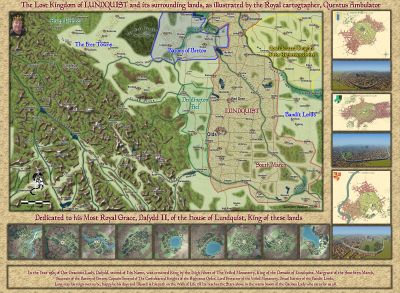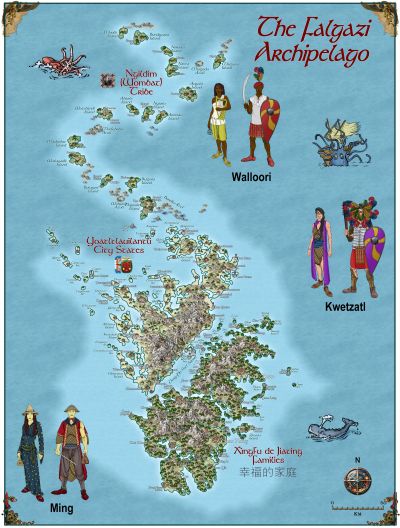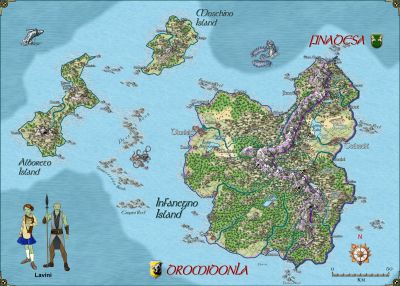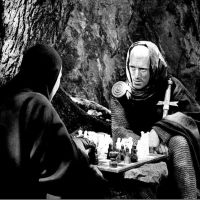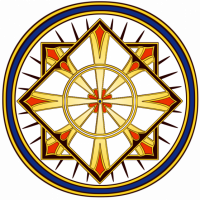Quenten
Quenten
About
- Username
- Quenten
- Joined
- Visits
- 7,203
- Last Active
- Roles
- Member
- Points
- 2,860
- Birthday
- November 29, 1950
- Location
- Australia
- Real Name
- Quenten Walker
- Rank
- Mapmaker
- Badges
- 16
Reactions
-
Vejorvik - Boris and Bear Tavern
-
MY MUNDI IS READY!
-
Community Atlas - A huge metropolis somewhere
-
What I've been working on
-
[WIP] Temple of Fah (May Annual: Stairs and Steps)
-
WIP - Senan
I love the Australian feel to your city - no houses all joined together in rows like most European cities, especially those with a lot of medieval areas. Houses with backyards, space between each free standing house - what a dream.
seriously though, too many fantasy cities suffer from the layout of houses too far apart - for richer areas, yes, for ordinary folk, I think not. So while I absolutely love your city, it certainly isn't a medieval one. Much more like USA and Australian suburbia. In fact, in our not very old cities in Australia, the inner suburbs are still all houses cheek to cheek.
-
WIP - Senan
-
Community Atlas - Irisian City States - Tiresia City State
Further information on the City-State, indicating possible hooks for adventures. I may even map some of these at a lter date.
Sites of Interest
1. Circle of the Deep Old Ones: This double stone circle henge dates back thousands of years, presumably to mythical inhabitants of this region which have left mysterious ruins dotted over the whole of Artemisia. It has a fearsome reputation, where people have gone missing fo decades or lost forever, especially in recent times. In reality, it is the secret meeting place of one of the revolutionary groups, even more violent than the Directorate, though very much smaller. The recent disappearances have all been unfortunate travellers who ventured too close, and their bodies now lie stacked in the crypts below the central mound of the henge. And unknown to all is a portal to the dangerous portal in the borderlands between the Irisian City States and Themisia (see Hezla Fort Ruins).
2. Tower of Contemplation: This very old monastic structure was one of the earliest religious buildings in the whole of the southern region of Artemisia. It has unusual architecture, being a multi story edifice with each floor smaller than the floor below, with columns surrounding the roof of each level. At the top is an open area with an altar, bloodstained form past sacrifices. It is rumoured that even humans have been sacrificed here in times of need. And now there is talk of another human sacrifice in light of the devastating drought and political unrest. The Abbot is seriously considering sacrificing someone of importance, given the situation, and unforeseen by him, his deputy, who manipulated the Abbot into even considering a human sacrifice, has the Abbot himself slated for the victim.
3. Temple to Apollon: This is now a largely deserted Temple, as the worship of Apollon has declined, being replaced by that of Poseidon, Athena and Demeter. Only two old priests live there now, and still make weekly sacrifices to the God, although these are mainly wild birds caught in the nets of the old priests. Nearby is a hovel housing an elderly woman, who is really an avatar of Daphne, the nymph pursued by Apollon, who now seeks revenge on the God, and is the one responsible for the fall-off in the worship of the God, and has engineered the drought, despite Demeter’s half-hearted attempts to break the drought.
4. Nearby Caves: These caves near the Temple are the secret HQ of the Directorate, housing several dozen cadres-in-training, large weapon supplies, and a meeting place where many gather each week to plan and discuss forthcoming campaigns of disruption. Unfortunately for the Directorate, it has been infiltrated by an agent of the Senate, who any day is likely to divulge all the information he has on the Directorate, including the location of this secret hideaway. The reason he has not yet acted is because he himself now harbours doubts about the rightness of the Senate’s cause, having seen too much of the atrocities of the wealthy landowners. He measures this against the increasing violent and destructive acts of the Directorate, however, and also is desirous of obtaining a large reward for his information.
5. Gloom Swamp: This flea-ridden miasma is home to many birds and unusual plants – some poison, some medicinal. And it is also the home of an Amphibian monster, called Granthil, who has dragged many an unwary passer-by down to the murky depths of the swamp, and has even raided small farms nearby –, alas all now deserted and ravaged by time.
6. Lichikao Keep: This is a heavily fortified edifice, protecting the island and its mainly orchard farmers from depredations from the well-entrenched grim (orcs) on the northern part of the island. The commandant, Phillipos Retermenes, is a sadistic man who delights in inflicting severe punishments on malefactors, and also bullies the local populace into providing him personally with food, wine and lavish presents. He pressures local maidens into short-lived dalliances, and has impregnated quite a few. His one redeeming feature is the genuine protective love he has for his teenage daughter, Phoebe, the only child of him and his long-dead wife whose death is the likely cause of his psychopathic nature now.
7. Vorgak (Orc Town): This walled town, initially built by human inhabitants of the City State, was conquered by invading grim (orcs) who themselves were fleeing from the military actions against them in the city-state of Stromphe many years ago. They have fortified the town, and are now 7,000 strong, nearly all fearsome warriors, even the females. As a result of this, and abetted by the indifference of the Senate who see no economic value to themselves in engaging in a campaign to eradicate this threat, and the deliberate inaction of the Commandant (who see advantage in using the threat to gouge the locals for even more ‘compensation’ for his garrison’s protection), the town has remained in Grim hands for over 40 years now.
-
WIP - Senan
-
Watabou City REVISED (annual 157)


